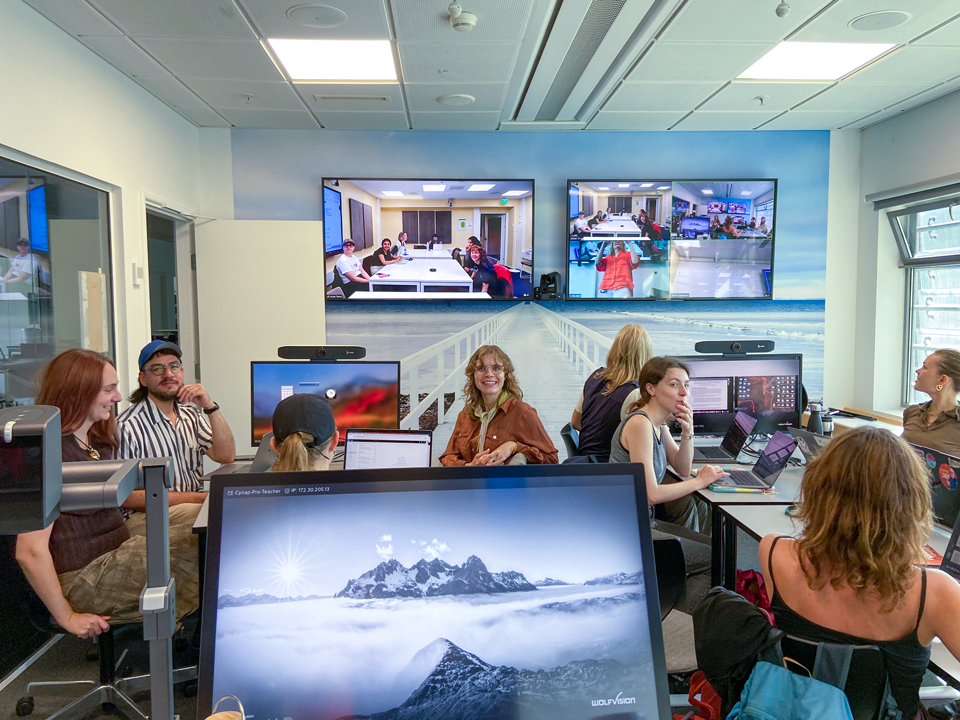According to Mie Buhl, what's new is the combination of video conference equipment and workstations for students to collaborate in groups. In fact, there are a total of 7 screens in addition to the computers that the students bring with them. Each table in the room has its own screen and up to five people can connect their computers, allowing the screen to display images from all five computers simultaneously.
"Before, I felt that technology determined how I should teach. I wanted to teach in a project-oriented way - not just lecture and then send students off to work on projects," says Mie Buhl. “With this setup, we have created an active learning space, and the room does not dictate that we must lecture all the time. Of course, we still give presentations, but teaching and project work are now more intertwined."
The master connects students with different backgrounds, professions, and life experiences
Mie Buhl was a bit curious about how students would perceive entering a room with so many screens – whether it would be overwhelming. The semester has just begun, so the experiences are still limited, but according to Mie Buhl, the initial feedback from students is positive.
Jana, who is a NoVA-student, has already experienced the great value it brings, that the students work together across campuses with the opportunity to contribute from each of their points of view:
“One thing that stands out for me personally is how different our academic backgrounds are. Seeing all of these professions and life experiences come into play when having to collaborate on different cases and engaging in discussions cross-campus brings value to the programme,” Jana says.
The setup also serves a pedagogical function, Mie Buhl explains:
"It should support the way we think about problem-based learning and the art-based methods used at NM NoVA. But it's also an essential part of community building. We know from previous evaluations that if you don’t do an effort to foster community from the beginning, it's challenging to maintain, so it has been important to incorporate this aspect."
Collaboration and feedback on physical artifacts
At NM NoVA, students not only work digitally but also with the creation of physical objects. Therefore, the newly designed room also features a document camera. It is a camera that somewhat resembles an old-fashioned overhead projector, Mie Buhl explains, and it can capture physical objects in high resolution and display them on the screens.
With the document camera, students from Aalborg, for example, can show their peers at Aalto a mockup and discuss their thoughts on it. This is a crucial part of the study program.
Research
Parallel to teaching, a research project is underway to examine the impact on pedagogy and didactics of the newly designed room.
This research should benefit anyone teaching in hybrid settings.


